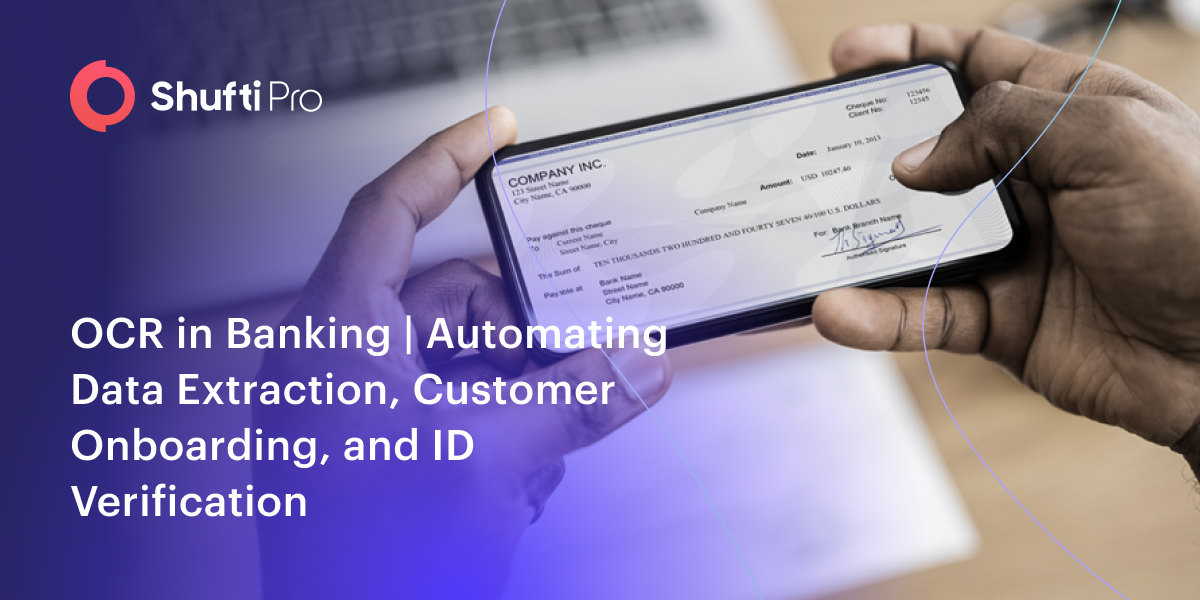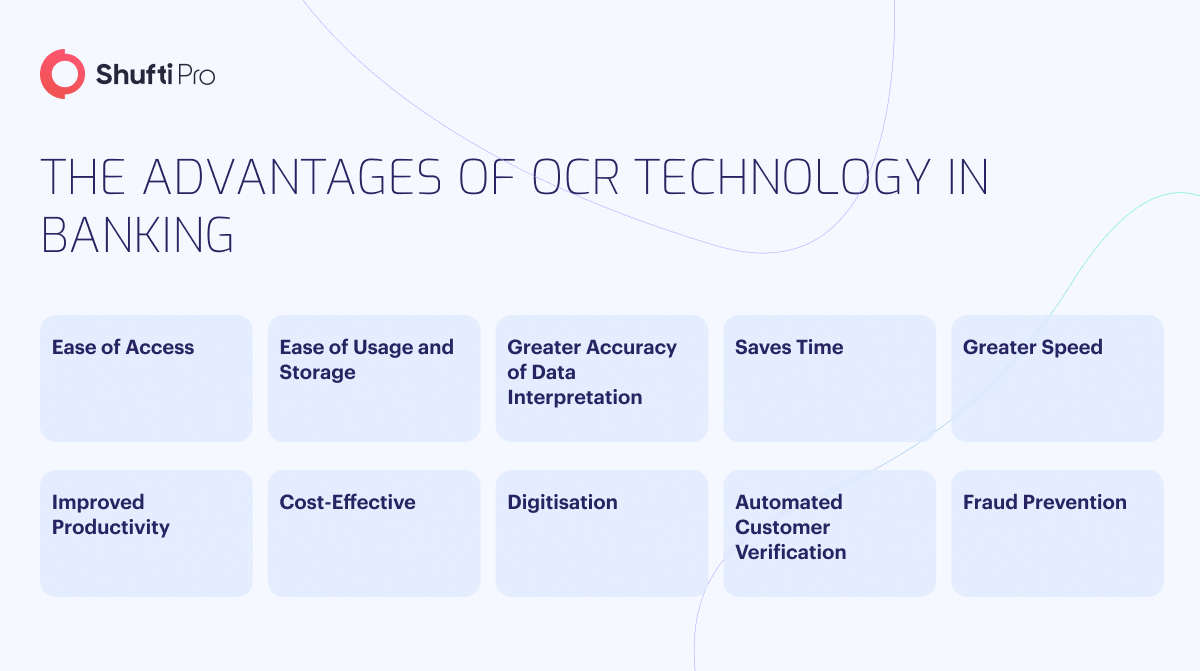OCR in Banking | Automating Data Extraction, Customer Onboarding, and ID Verification

The global Banking and Financial Services Industry (BFSI) is one of the most heavily regulated and monitored sectors in today’s data-driven world. In today’s fast-paced and data-driven economies, the banking sector needs to deal with billions of customers’ financial and personal information which requires automated solutions that are accurate, fool-proof, and efficient. Manual processes are highly prone to errors, leading to financial losses and inconvenience. OCR in banking is a game-changing automation technology that is being highly used in the financial industry. In simple terms, OCR technology extracts data from paper-based or digital documents and converts it into machine-readable text that can be easily edited, formatted, and searched.
Having exceptional data extraction, fraud prevention, and automation capabilities, OCR has become an integral part of banking processes or functions, making the global OCR market to reach $70 million by 2023. This technology is breaking barriers and helping the financial industry fast-track digitisation.
The Problem with Paper-Based Operations
Cheques, forms, bank statements, and other paper-based financial documents have long been used within the banking sector. However, as processes are getting digitised the conventional way of working exposes a significant limitation within the industry.
Consider a situation where your business:
- Try to collect, organise, and store customers’ information along with documents in an online database to get easy access in the future.
- Intent to integrate automated solutions to meet digitisation.
- Aiming to introduce emerging technologies to enhance daily operations.
In the above-mentioned scenarios, the power needed to initiate these improvements remained locked if using paper-based documents. Scanning documents might seem like an easy task. However, the manual way of doing so becomes a complex problem. First, it creates a photograph of a document, which is saved as a TIFF file. Whilst this overcomes the need to carry documents physically, yet restricts computers from accessing the information placed in the papers.
In the banking industry, regulatory obligations further uncover the limitations associated with paper-based processing. Under the Know Your Customer compliance requirements, banks are required to have digital operations as it would be time-consuming and hectic to manually handle the volume of information required.
OCR: A Revolutionary Concept
Optical character recognition has been a transformative innovation the world has seen. The power, applications, and functions of OCR can not be overstated, from verifying government-issued documents like ID cards to reading data from licence plates, OCR makes the processes a lot easier and streamlined by digitising the data capturing and extraction procedures. Applications that convert tourist signs in foreign languages to native are a great example of how OCR technology can transform daily operations.
Modern OCR systems use artificial intelligence and machine learning algorithms that make them capable of recognising complex patterns within financial documents that are critical in the world of banking and finance. In the banking sector, physical documents are required periodically, sometimes daily, or even multiple times a day, which makes it a hectic job. However, if they are converted into electronic form, they will become more suitable for long-term archival. In addition to this, OCR also provides an option of editing converted documents, which means the information places can be modified in real-time. Here are some prominent areas in the banking and finance sectors where OCR works wonders:
- Big Data: Processing and modelling large volumes of data requires everything to be in digital form, so information can be read or organised using applications or software. This can be easily done using OCR scanners, so it serves as a crucial step for data mining and management purposes.
- Regulatory Compliance: Like the gaming, investment, and real estate sectors, the financial industry is one of the most heavily regulated due to the increased risk of financial crimes. In order to meet regulatory obligations, and stay put with the millions upon millions of data points – digitization is a crucial aspect that can be embraced using OCR technology. Reviewing image-based documents is no longer an option because criminals use sophisticated approaches to manipulate records.
- Standardisation: As financial documents come in a variety of forms, it’s hard to categorise them or organise them in a structured way that makes data retrieval frictionless. However, using OCR scanners, banks can create standard formats where data can be electronically assessed, organised, and accessed.

OCR in Banking | The Perfect Match
Before the banking sector experienced digital transformation, even a basic financial transaction took at least 5 to 8 working days to process, and now in today’s data-driven and wholly digitised world, even international transactions are carried out in a blink of an eye. Among AI, ML and other transformative technologies, optical character recognition plays a crucial role in helping the banking sector meet digitisation.
The teenagers of today who never liked the idea of traditional banking and always saw it as a tedious, time-taking, and agonising process whilst taking their parents to visit banks, can now carry out banking operations in a few taps on their smartphones all whilst sitting in their homes.
Prior to OCR banking solutions, manual processing backlogs and mountainous piles of customers’ documents for verification slowed everything down. Due to this, banking officers remain busy whilst the firm loses valuable hours performing simple tasks such as processing a cheque, or printing a bank statement.
OCR Technology | Making the Way for Digital Banking
Fast-forward to 2023, and now financial institutions are no longer required to specially hire an employee to collect or enter details from a cheque into the company’s system. Optical character recognition can automatically scan the whole document, identify different sections, create a digital template of it, and extract essential information from the provided paper in a matter of seconds. OCR systems constitute three fundamental principles, which are as follows:
- Pre-Processing: Before artificial intelligence and machine learning algorithms take the lead, OCR technology ensures that the provided documents are scanned precisely. In this step, flaws are removed, the image is enhanced and the distortions are removed to further improve the accuracy of recognition.
- Character Recognition: In this stage, the data fields from which the data will be extracted are selected. This is called feature extraction, a sophisticated method that only extracts valuable data whilst ignoring less-priority information before actually converting it into machine-readable text.
- Post-Processing: post-processing is as crucial as preprocessing because it is used to remove the errors made during data extraction to increase accuracy. Doing this, helps the AI and ML algorithms verify and cross-match the results from a list of previously stored templates designed for specific financial documents.
Automate Data Extraction with Shufti
Since the world started getting digitised, optical character recognition technology has played a vital role in assisting industries to transform hectic business operations whilst automating data entry and extraction from different documents.
Shufti, an all-in-one identity verification and document authentication service provider, harnesses OCR technology as the core of the customer onboarding process. Using OCR-based IDV checks, the banking sector can swiftly screen clients’ identities and documents before onboarding them or letting them make transactions. Our OCR scanner is backed by AI models that make it capable of extracting text from identity documents in a matter of seconds with 99% accuracy.
Shufti’s OCR for Businesses can:
- Instant image-to-text data extraction
- Can extract data from structured and unstructured documents
- Offering global coverage with 150+ languages
- Supports 10,000+ document types
Want to unlock growth opportunities with Shufti?










